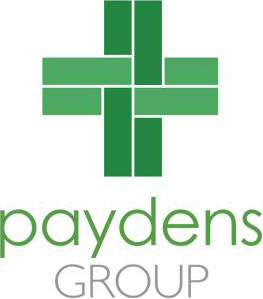Cooling Tower Cleaning | Cooling towers are vital to many commercial and industrial processes, offering an energy-efficient way to remove excess heat from systems. However, these systems can quickly become inefficient and dangerous without regular cleaning and chlorination due to the build-up of harmful bacteria such as Legionella.
The Importance of Regular Cleaning and Chlorination
Over time, cooling towers and their associated systems accumulate nutrients, biofilms, and scale deposits, all of which conditions that create an ideal environment for the growth of Legionella and other bacteria. If not adequately managed, Legionella thrives in stagnant, warm water and can lead to serious health issues such as Legionnaires’ disease.
One key factor contributing to bacterial growth and system fouling is the quality of water used in cooling towers. Water containing salts like magnesium carbonate and calcium carbonate become problematic when heated. These minerals are less soluble in hot water, which leads to scale formation and deposits on system components. In addition, organic matter and other contaminants can form scum that clogs the system, drastically reducing operational efficiency.
The Cost of Neglecting Cooling Tower Maintenance
Fouled or contaminated cooling towers pose health risks and affect operational performance. Studies have shown that neglected cooling systems can lose between 40% and 50% of their efficiency, increasing energy consumption and operating costs. These inefficiencies can impact production timelines, reduce the effectiveness of chillers, and ultimately eat into your operational budget.
Routine maintenance, including thorough cleaning and chlorination, is essential for maintaining cooling tower performance and avoiding these costly disruptions.
Industry Best Practice: Biannual Cleaning
Most companies implement a risk management approach to determine how often cooling towers should be cleaned. However, industry best practice recommends cleaning and chlorinating cooling towers at least twice yearly.
Additional steps are advised in regions with colder climates where cooling towers are taken offline during winter months. Complete cleaning and disinfection should be done at the end of the operational season and again just before the system is used in the spring. This two-step process helps to remove any residual contamination and minimises the chance of Legionella proliferation during periods of inactivity.
Our Process at Green Water Services
At Green Water Services, we are specialists in cooling tower cleaning and chlorination. Our technicians are thoroughly trained in the correct procedures and use the right personal protective equipment (PPE), tools, and chemicals to ensure the job is completed efficiently and safely.
We follow strict internal protocols, using our own Standard Operating Procedures, which fully comply with HSG 274 guidance (the Health and Safety Executive’s authoritative document for managing Legionella in water systems).
Our approach is always collaborative. We work closely with clients at every process stage, ensuring clear communication, minimal disruption, and optimal results. From initial planning to post-cleaning checks, our priority is to protect the health and safety of your employees, the public, and valuable assets.
Nationwide Coverage, Local Service
With offices in Burton-on-Trent, Green Water Services is strategically positioned to offer fast, reliable cooling tower cleaning and chlorination across the UK. Whether you manage a single facility or a multi-site operation, we can tailor a cleaning schedule that suits your requirements.
Get in Touch
Don’t let your cooling systems become a liability. Protect your operations, people, and reputation with expert cooling tower cleaning and chlorination from Green Water Services.
Contact us today to learn more about our services or to arrange a site visit. We’re here to keep your systems safe, compliant, and operating at peak performance.
















